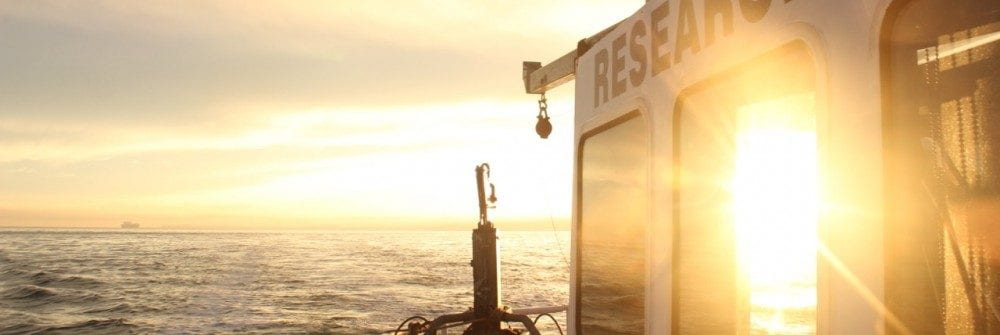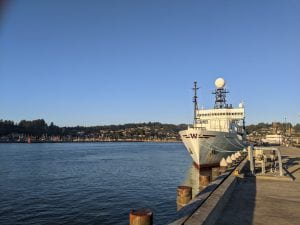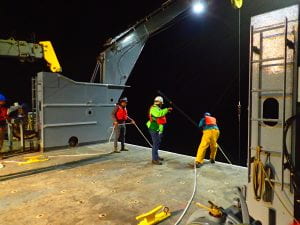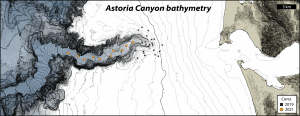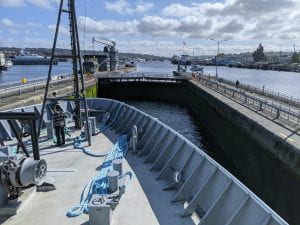After what seemed to be an eternity (ok, about a year), the sediment dynamics group was reunited with the open ocean for data collection in the axis of Astoria Canyon. The cruise departed from Newport, Oregon on the RV Thomas G. Thompson, and arrived at the Marine Sciences Building dock in Seattle a week later. The research goals of the cruise were to 1) collect a suite of sediment cores from Astoria canyon, and 2) service many of the Applied Physics Laboratory‘s instrument moorings such as ChaBa. ~15 undergraduate students were also aboard the ship, gaining firsthand experience collecting data for these research projects. Both research objectives were successful, although ocean conditions tested our crew with high winds and 20-foot swell.
The sediment dynamics group is especially excited about this recent haul of mud from Astoria Canyon. Our research in Astoria Canyon began in 2019, with a series of cores collected from the uppermost canyon head (see map below), and an instrumented tripod deployment measuring water column processes. In this early study, we observed the potential for down-canyon sediment flushing by sediment-gravity flows, and rapid sediment loading in the canyon head, but these findings raised additional questions about the fate of sediments resuspended in the canyon head. Does the shelf-incised canyon axis act as a permanent sink for small, off-shelf gravity flows? Where is the canyon-axis depocenter? Is it possible to trigger a through-canyon sediment gravity flow with shallow oceanic sediment resuspension? The cores collected on this recent cruise march deeper into the canyon axis, aiming to address these questions. Stay tuned for our analysis of these exciting new cores!
